Markets were hit last night as COVID-19 worries resurfaced. A safe haven bid restored the falling DXY as EUR eased:
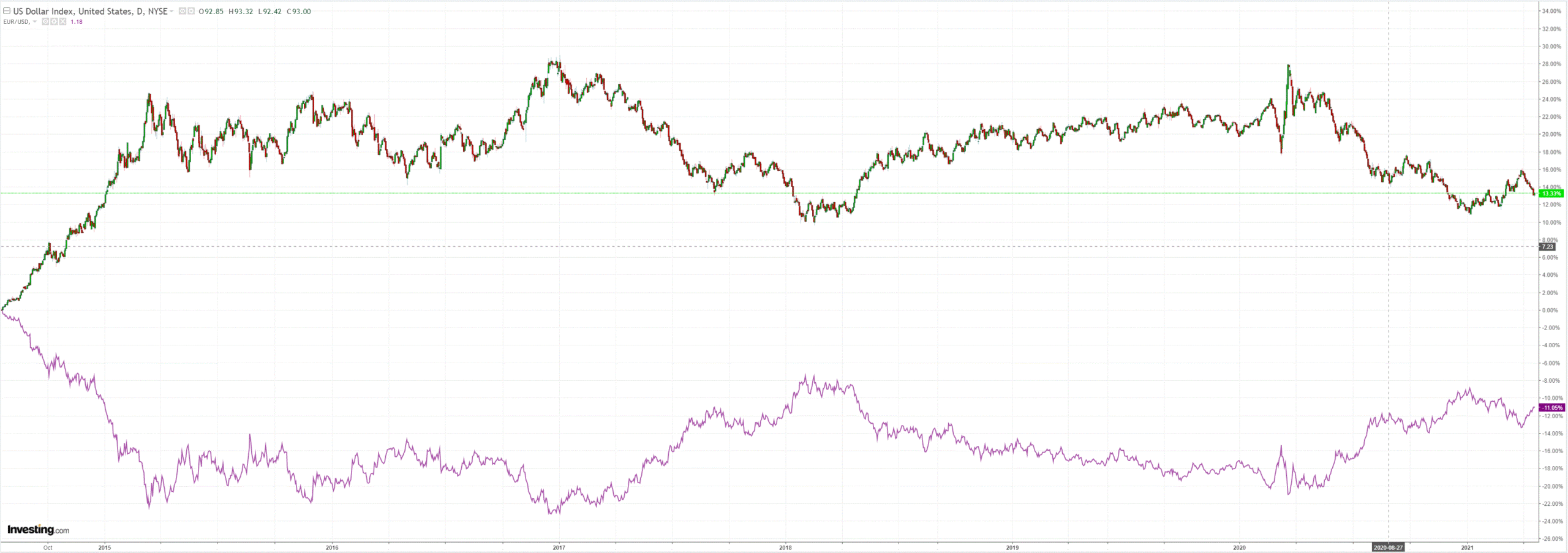
The Australian dollar still has a large head-and-shoulders topping pattern against DXY and downtrends against other DMs:
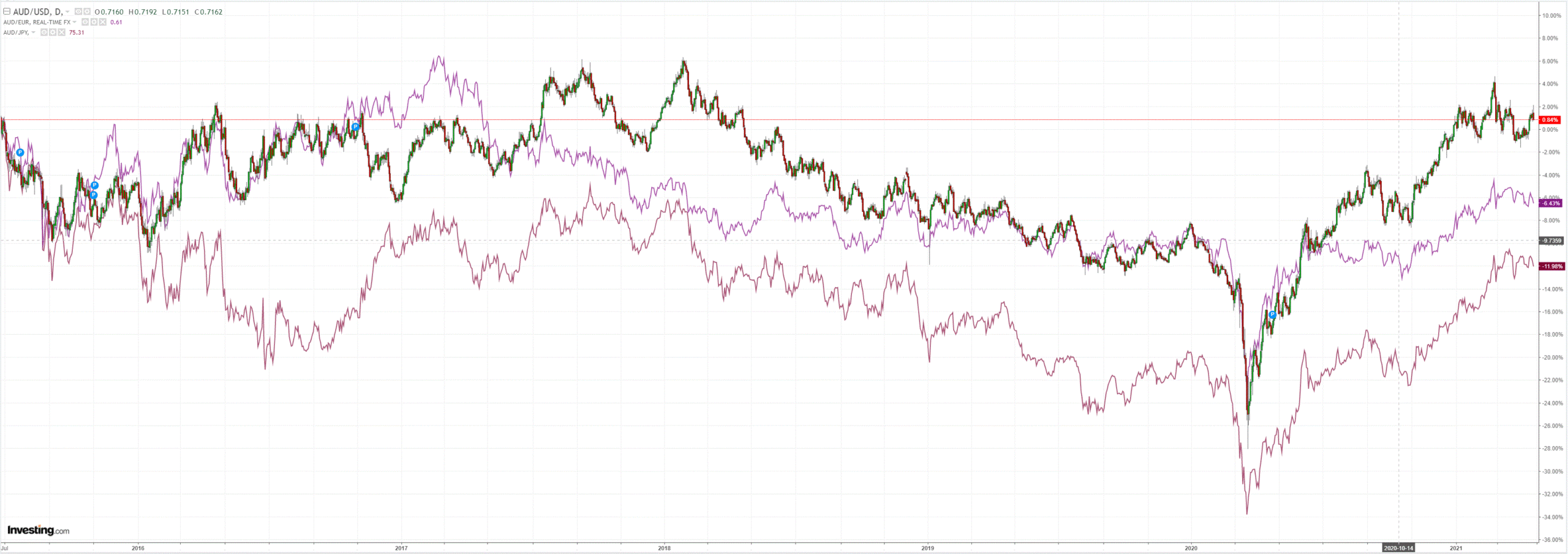
Oil and gold divorced again:
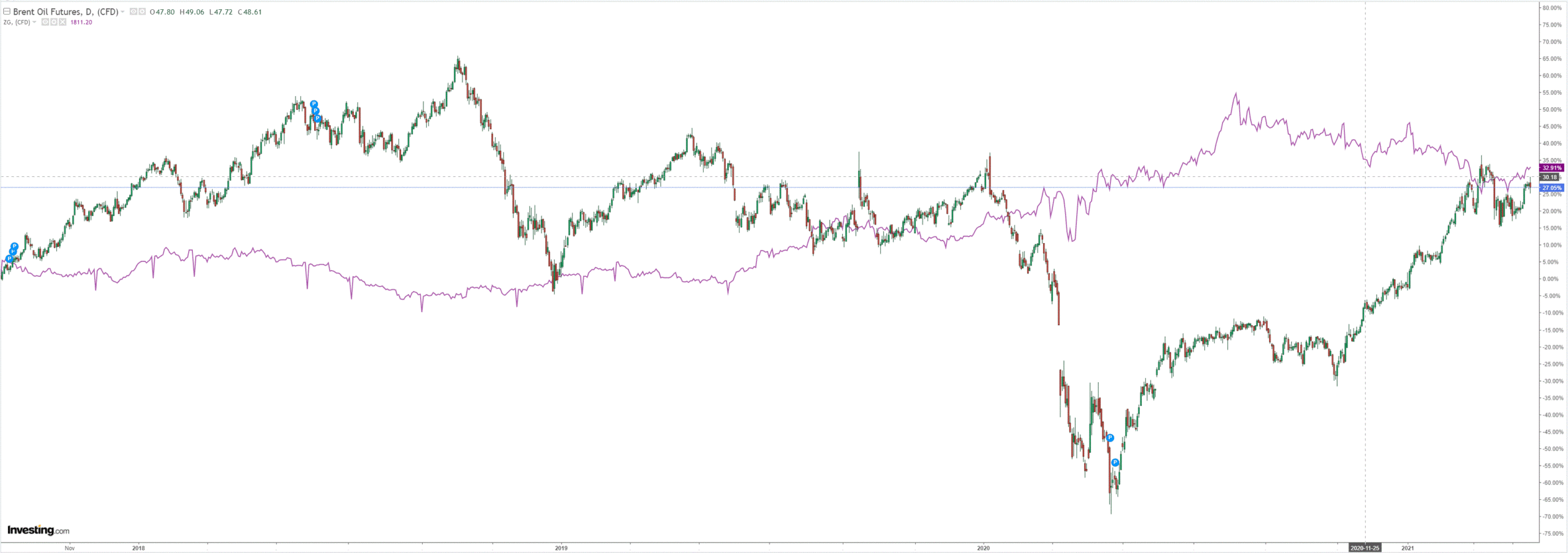
Base metals all sagged:
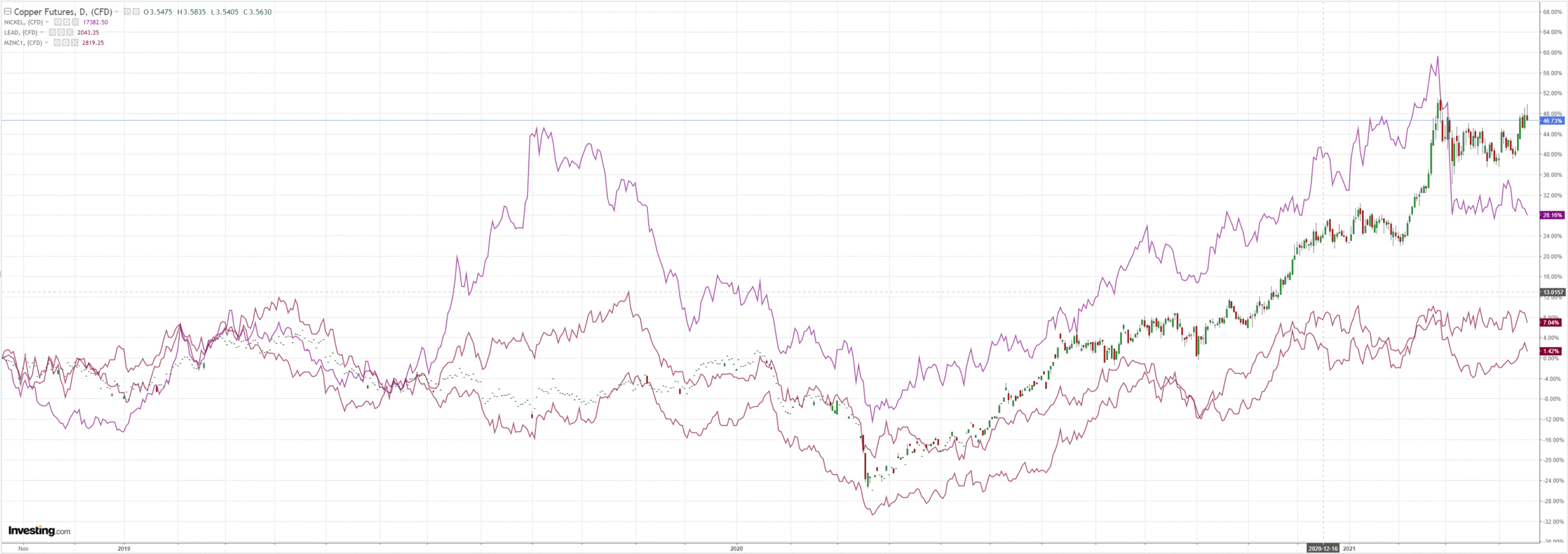
Big miners took it in the team:
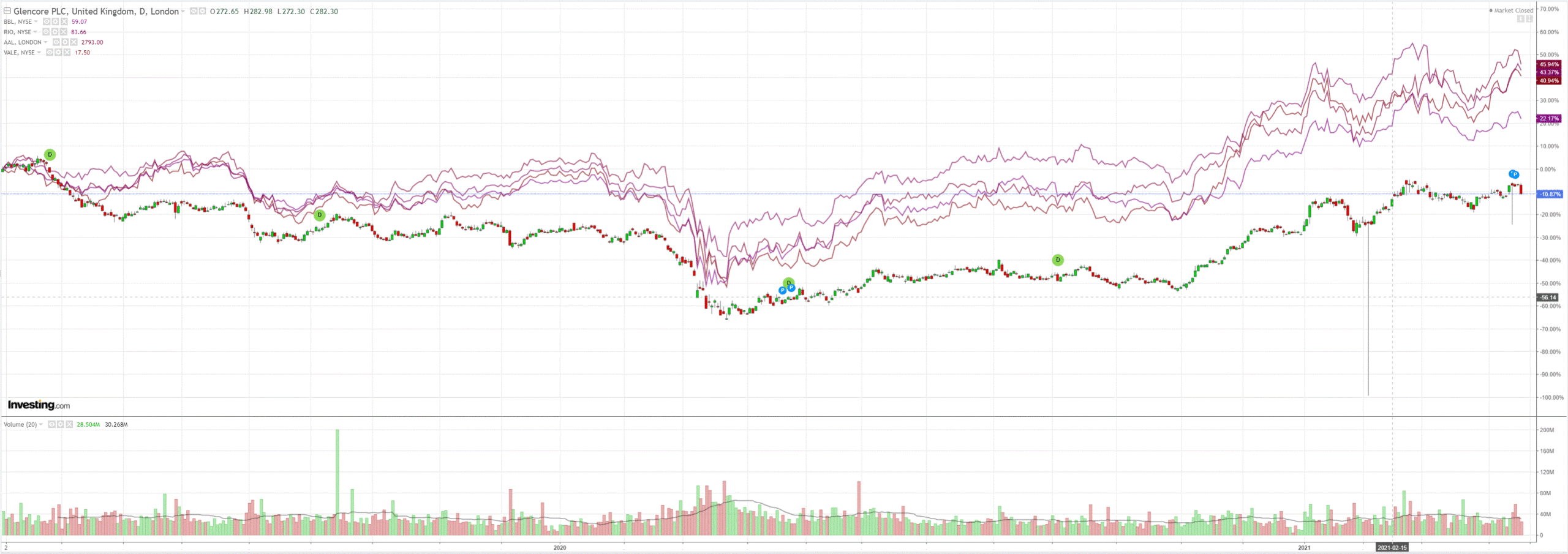
EM stocks still appear sick:
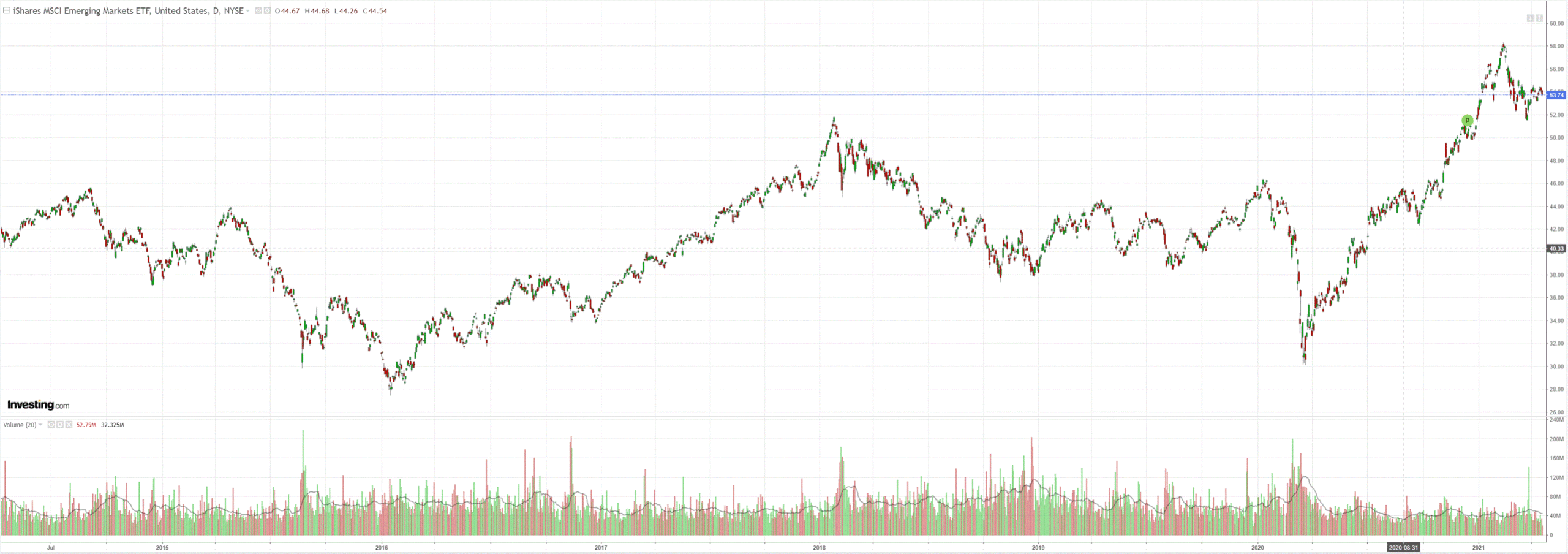
Junk fell but is OK so far in the US and EMs:
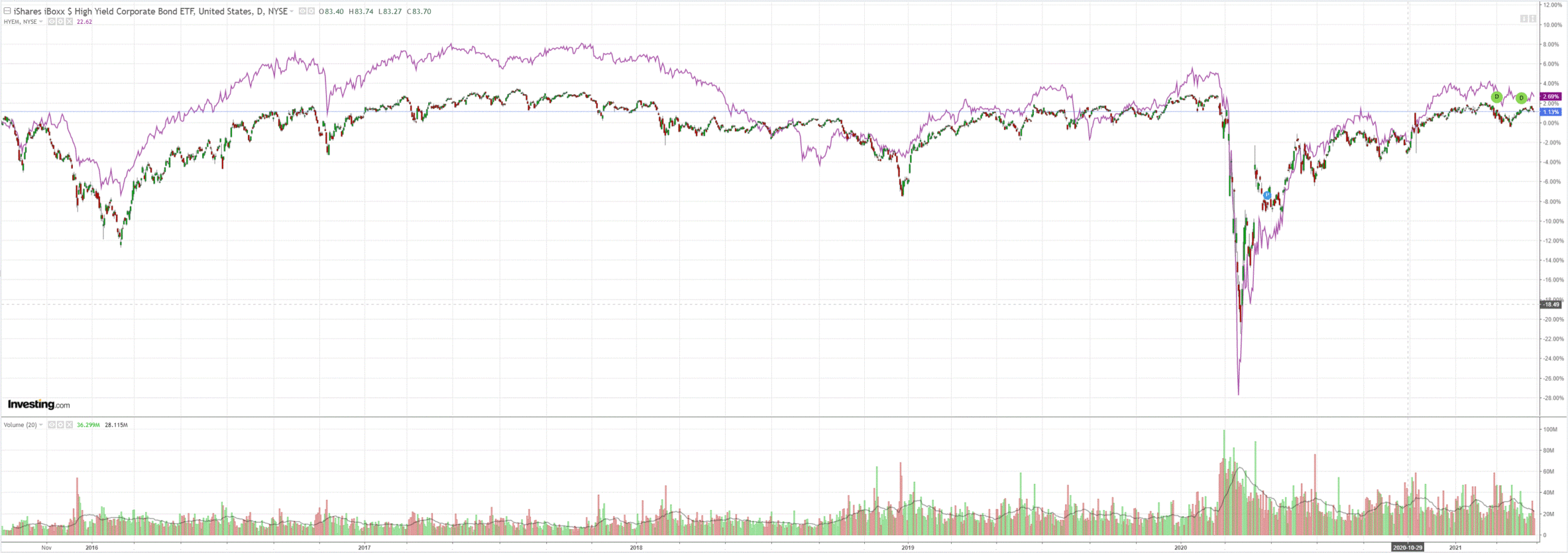
US yields were bid:
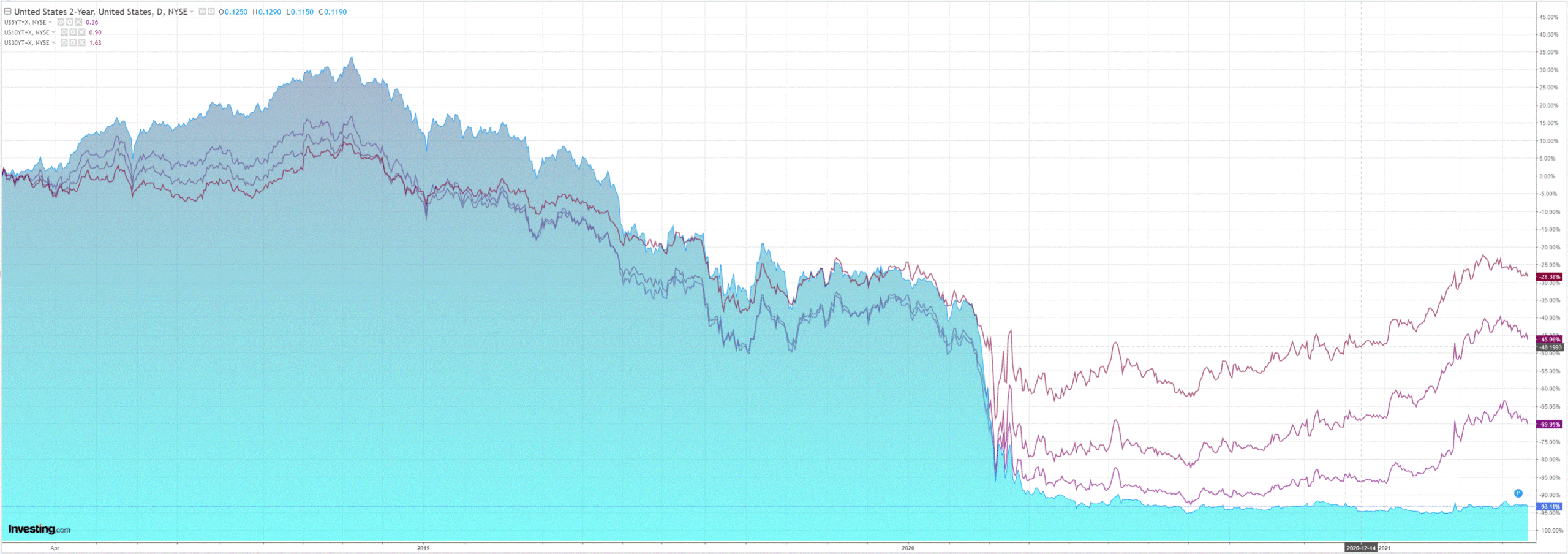
Stocks fell moderately, led by tech:
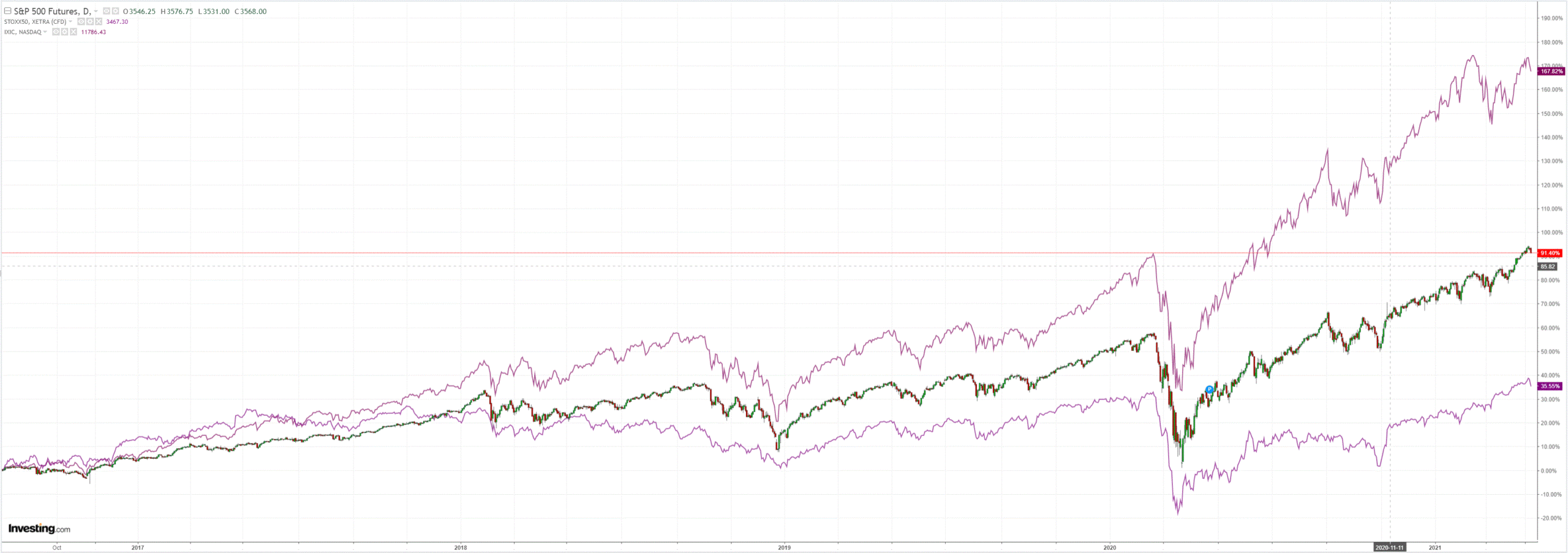
There was nothing much on the data front to reverse the risk trade. We’ll just have to put it down to a resurgent virus, most obviously in EMs and, within that, India. By comparison, DMs appear to have it licked:
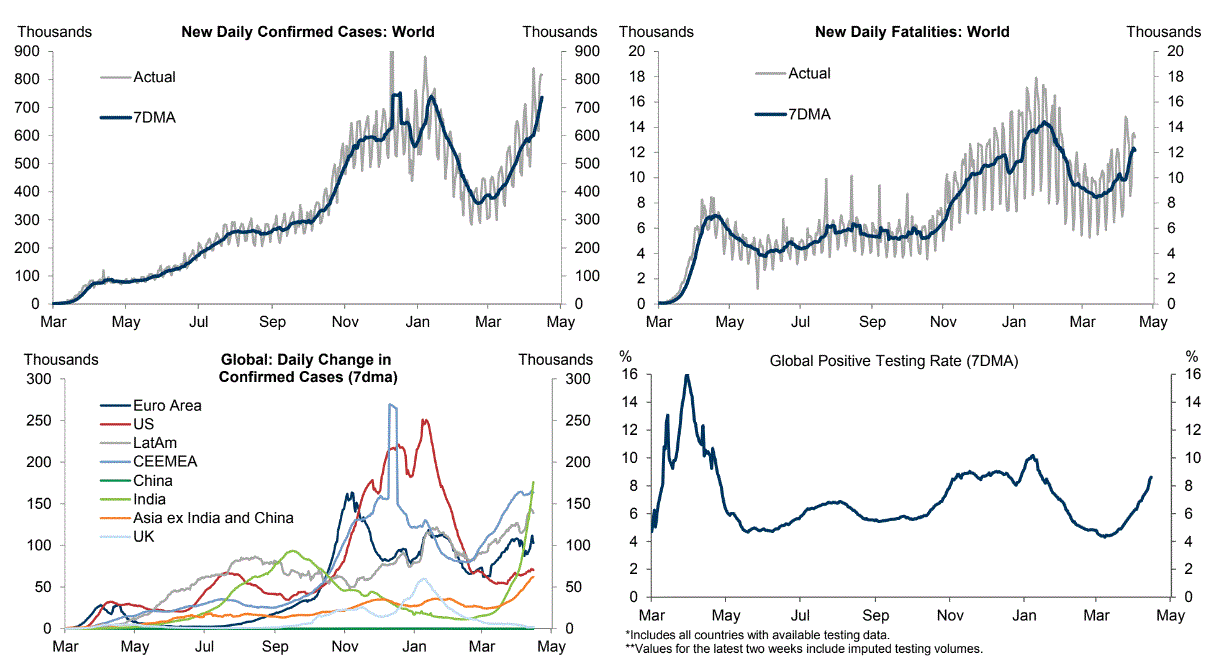
Mizuho has the wrap:
The Johns Hopkins University website shows that over 140mn people around the world were infected with COVID-19 as of early morning on 19 April Japan time. That is an increase of around 5.25mn people over the past seven days. The rate of increase has accelerated in each of the past eight weeks. The spread of the virus has slowed in the US for the first time in four weeks, although it remains the most infected nation on earth. India is reporting more than 200,000 new cases per day, with almost 15mn people infected. That has taken India past Brazil and into second place.
One reason for the huge surge in new cases in India, with its population of 1.3bn, is the emergence of a double mutant, a new variant that has the characteristics of two already identified variants. The Indian government maintained in late March that there was no direct link between the double mutant and the sharp rise in case numbers but Bloomberg has quoted Anurag Agrawal, director of thes etate-run Council of Scientific and Industrial Research’s genomics institute, assaying the prevalence of the double mutant was set to rise as “it has two critical mutations that make it more likely to transmit and escape prior immunity. “Meanwhile, 37 doctors who had already received two vaccine jabs were confirmed as infected at a New Delhi hospital in early April. According to the Asahi on the 19th, it is not known whether they had been exposed to the double mutant but the incident has caused some local media to question the efficacy of existing vaccines.
Prime Minister Yoshihide Suga spoke on the phone with the CEO of a large US drugmaker during his visit to the US on the 17th. He effectively agreed that Japan would receive additional supplies of the company’s COVID-19 vaccine. Taro Kono, the minister for administrative and regulatory reform, who is also in charge of the vaccination program, said the government expects to secure enough doses so that anyone aged 16 or over who wishes to be vaccinated can do so by the end of September.
The CEO of the drugmaker said at a seminar on the 15th that people may require a booster shot 6–12 months after the initial to jabs, as well as an annual top-up. He said further research into variants of the virus would be needed to establish requirements.
The Wall Street Journal quoted the CEOon the 16th as telling participants at a virtual event on 1 April: “The variants will play a key role. There are vaccines where one does is enough and there are vaccines like flu that you need every year.” It was unfortunate for PM Suga that this news should break just as he was trying to frame his visit as a success for securing adequate supplies to inoculateJapan. The Japanese media gave this suspiciously little coverage.
An Israeli study has found that the US vaccine is less effective against the South African variant of COVID-19. Researchers at Tel Aviv University found “a disproportionately higher rate of the South African variant among people vaccinated with a second dose, compared to the unvaccinated group. This means the South African variant is able, to some extent, to break through the vaccine’s protection.”
According to Reuters, the researchers cautioned that the study had only a small sample size because of the rarity of the South African variant in Israel.
Even in the US, where progress in vaccinating the population has contributed to an overwhelming mood of optimism about the economic outlook, the UK and other variants are a growing threat. Kyodo News reports that the UK variant has been behind the emergence of Michigan as a hotspot. Ironically, that is where the major US producer is manufacturing its vaccine.
For forex, this continues and amplifies my recent theme of DM outperformance, in particular, the US. While many EMs will be forced back into lockdowns, and can’t get enough vaccines, stuck largely ineffective Chinese versions, the US is marching ahead. To this we can add the next round of stimulus to push growth comfortably above 3% for the next five years:
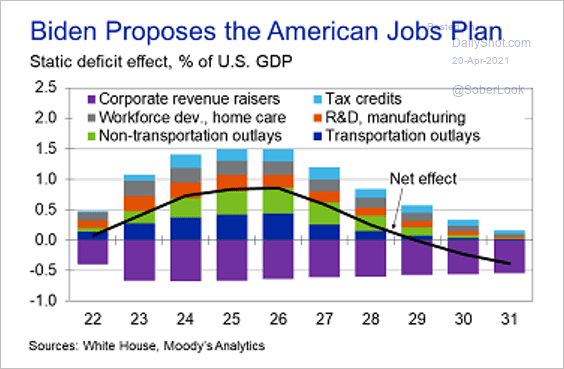
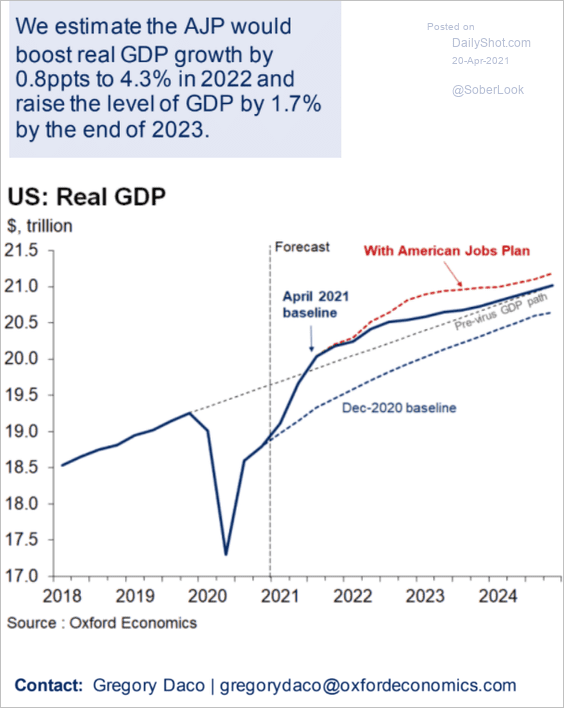
EMs are big producers and consumers of commodities so that does not bode well for the EM, commodity, AUD complex either.
At this stage, there is little corroboration of renewed EM stress in junk debt so we can put this down to day-to-day volatility. But if EM debt starts to slide away from DM then it’ll be time to batten down the hatches, with DXY the biggest winner and AUD sucked down with the EM losers.

